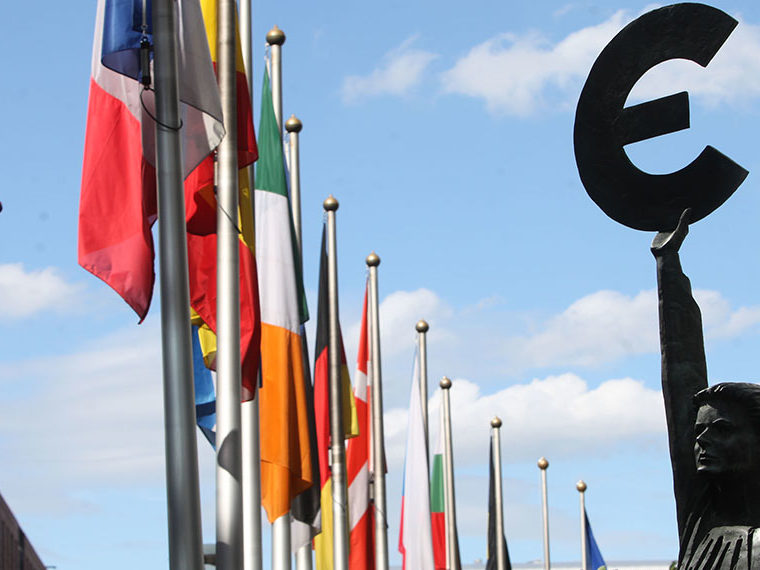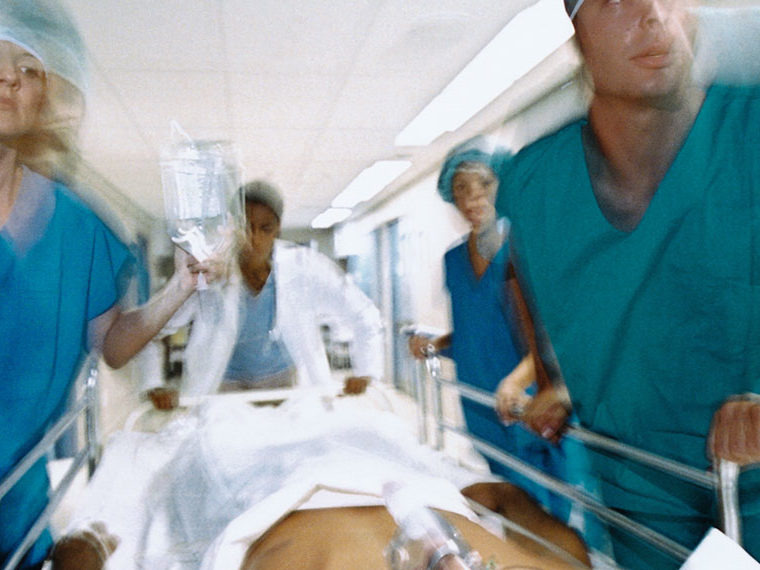A 12-month high in local unemployment triggers savings behavior
With the U.S. suffering its worst job losses since the Great Depression — 30 million unemployment claims filed in just six weeks — a big question is how deep and long-lasting the decline in consumer spending will be.
Consumer outlays, after all, account for nearly 70% of the economy.
Well before this year’s global pandemic, a team of researchers set out to measure how a single economic indicator — the local unemployment rate — affects consumers’ decisions about spending and debt repayment. A working paper offers a sobering indication of what may be ahead.
Opt In to the Review Monthly Email Update.
UCLA Anderson’s Mark Garmaise, University of Southern California’s Yaron Levi and Stanford’s Hanno Lustig studied the spending patterns of nearly 10 million consumers from all 50 U.S. states and the District of Columbia in the period January 1, 2012, through December 18, 2018. The focus was on how people reacted to government reports of new 12-month highs in their local metro area’s jobless rate.
The study found that consumers overall responded quickly, and negatively, to news that the local unemployment rate reached a new one-year high: In the two weeks after such news, consumers in those areas collectively cut their discretionary spending (outlays on non-essential things) by an average of 2%, compared with areas with many similar economic fundamentals that didn’t post a new 12-month jobless-rate high.
The researchers’ findings amount to a surprising behavioral quirk. Areas that came close to a new 12-month high, but didn’t quite reach it, didn’t feel the significant cut in consumer spending. And areas that initially reported a new 12-month high, and then revised the data to some level below a 12-month high, experienced the spending drop, suggesting that consumers were reacting to reports of the specific level of economic distress, not just overall conditions.
“Twelve-month maximums seem to have a behavioral effect that is significant and hard to rationalize,” Garmaise said in an email exchange. “The response to hitting a 12-month-maximum, in particular, seems dramatic and difficult to explain.”
What’s more, the authors write, “We find no evidence that the consumption drop is subsequently reversed.” On the contrary, in areas where the unemployment rate hit new 12-month highs for at least five consecutive months, “The cumulative drop in spending is close to 5%,” the study says. Historically, that would rank as a “substantial decrease” in discretionary consumption.
FOR LOCAL JOBLESS RATES, THE WORST NEWS IS COMING
The accompanying study shows how U.S. consumers paid particular attention to high local jobless rates during the period 2012–2018, depressing spending in those areas even as the economy overall continued to rebound.
With jobless rates now soaring amid the COVID-19 pandemic, how consumers react to their local employment picture could be key for the economy’s ability to return to growth. While unemployed people may have little choice but to cut consumption, the spending decisions of consumers who still have jobs may be more important for any eventual recovery.
The psychic damage is already extreme: The national unemployment rate jumped from a generational low of 3.5% in February 2020 to 4.4% in March, then rocketed to 14.7% in April — the highest since the Great Depression. Employers slashed a net 20.5 million jobs in April.
But the economic pain at the local level isn’t yet fully apparent because metro area jobless rates take the government more time to compile. April 2020 data won’t be available until June 3. The March numbers on local unemployment caught only the early wave of job cuts late that month as millions of businesses shut down or curtailed hours: Jobless rates were higher in 65% of 389 U.S. metro areas in March 2020 versus one year earlier, the Bureau of Labor Statistics (BLS) reported.
Many metro areas that were already hotspots of unemployment saw their jobless rates rise in March, year-over-year. Yuma, Arizona, for example, had an unemployment rate of 14.8% in March, up from 12.5% a year earlier, the BLS reported. Agricultural regions of California also were hit hard. The jobless rate in Merced, California, jumped to 12.9% from 10.3% a year earlier.
As tourism began to crash, the Las Vegas, Nevada, metro area’s unemployment rate rose to 6.7% in March from 4.1% a year earlier. In the industrial Midwest, the jobless figure for Cleveland rose to 7.3% from 4.3%. Jet maker Boeing Co.’s troubles helped drive up the unemployment rate for Seattle’s metro area to 5.4% from 3.6%.
One factor that could affect consumers’ spending decisions is whether they expect lost jobs to be gone for good, or they view them as temporary furloughs. Of the 23.08 million Americans who were jobless in April 2020, 18.1 million, or 78%, reported being on temporary layoff, the BLS said. If employers begin calling back workers soon — a big if — that could make consumers more confident about maintaining spending.
— Tom Petruno
Notably, the period studied (2012–2018) was a time of consistent, if slow, growth in the U.S. economy as a whole. While Americans had plenty of positive economic data to reflect on, the research suggests that consumers regard local unemployment data as particularly “salient” relative to other measures of economic pain. In the behavioral economics field, “salience bias” refers to the human tendency to focus heavily on things that are perceived as major shocks. That can be problematic if the result is that people ignore other potentially important information.
Though it may be natural for many consumers to cut back on spending in the face of rising unemployment, some economic theories hold that such sustained behavior would be illogical for people whose jobs and income are relatively secure. In that sense, the study by Garmaise, Levi and Lustig challenges the “permanent income hypothesis” developed by economist Milton Friedman. That theory maintains that rational consumers base their current spending on expected income over time rather than on immediate income. Friedman supposed a “smoothing” of spending that helps support the economy in tough times.
“The study does suggest the importance of purely behavioral — in other words, ‘non-rational’ — factors in guiding consumers’ spending,” Garmaise said in the interview.
To test whether local jobless data in fact represent “salient” information to consumers, the authors measured Google Trends scores associated with the search term “unemployment.” Going back as far as 2004, the study found that Trends interest in unemployment searches was “significantly higher” in metro areas in which the last reported local jobless rate was a 12-month high.
The authors then tracked the unemployment data against credit card and bank account transactions of 9.66 million consumers from 2012 through mid-December 2018, as compiled by an online account aggregator. The 2012 data were the earliest available.
Three key findings emerged:
- Not surprisingly, consumers’ first instinct when facing a troubled economy is to cut spending on relative luxuries, as opposed to necessities. The average 2% drop in discretionary spending in the two weeks after a new 12-month high in local unemployment was fueled by lower spending in sectors that included restaurants, travel and jewelry, the study says. “Consumers who experience a local unemployment maximum spend approximately 1.5% less in restaurants in the subsequent two weeks,” the authors write.
- A worsening unemployment outlook also affects how consumers think about their debt situation. Credit card repayments drop an average of 3.6% in the two weeks after the local jobless rate hits a new 12-month high, the study says. People whose economic expectations have been dimmed by the unemployment data “may choose to preserve some financial slack to enable themselves to respond to worsening conditions,” the paper says. Reducing debt repayment “can be regarded as a form of precautionary saving.”
- Likewise, consumers respond to higher jobless data by keeping more cash in the bank. In the two weeks after a new 12-month high in the local unemployment rate, people withdrew 1.6% less from their bank accounts, on average, compared with consumers in areas where the jobless rate didn’t hit a new high. “Smaller cash withdrawals may reflect lower current spending or a plan to spend less in the future,” the authors write.
With local jobless rates now rising steeply, the research by Garmaise, Levi and Lustig suggests one key risk is a “negative feedback loop” developing: “A series of negative reports will depress consumption … This, in turn, raises the specter of negative feedback effects in which dark unemployment announcements in the current period reduce future discretionary spending, which may, in turn, lead to weaker future employment conditions,” the study says.
The authors say one strategy for potentially mitigating a negative feedback loop would be for U.S. policymakers to accompany the release of negative economic news with other measures or announcements meant to bolster consumer confidence. “We think it’s a natural policy implication of our paper,” Garmaise said in an interview.
Featured Faculty
-
Mark J. Garmaise
Professor of Finance
About the Research
Garmaise, M., Levi, Y., Lustig, H. (2020). Spending less after (seemingly) bad news.





